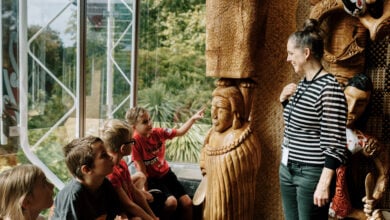Chasing a Lamborghini

 Speaking on the topic of Innovation – Lamborghini or lemon? – Associate professor Graham Atkin focused on connecting innovation to the two other conference themes: education and collaboration.
Speaking on the topic of Innovation – Lamborghini or lemon? – Associate professor Graham Atkin focused on connecting innovation to the two other conference themes: education and collaboration.
Mr Atkin told his audience the qualities most needed in all teachers is: “a sense of open mindedness, a willingness to experiment, a willingness to try out new ideas, a willingness to be flexible and adaptable. We need people to be innovating in a high performance way. Innovation is expensive, often in terms of dollars, but also in terms of teacher time.”
He wanted teachers to learn to distinguish “Lamborghini innovation from the lemon innovation” and vest their time and energy in the former. Examples of great failures, or lemons, were the Titanic, the airship, Concorde and the home robot. In education, there had also been lemons. Open classrooms and learning centres had not particularly taken off. It was a similar story with interactive whiteboards.
He saw teachers as being obligated to provide three key things:
1) Greater learning
2) Greater interest
3) Greater confidence
“We will not be successful as teachers unless we achieve the intersection of those things. It isn’t good enough to cause greater achievement on its own. If we’re creating achievement without creating interest – without creating a sense that children want to take these ideas further and do something else with them – to my reading, we have failed.”
Teachers also failed if they did not create a greater sense of confidence. “It is the intersection between these things that makes the difference – the ability to have more confident, interested and successful learners. It’s not one thing or the other, it’s the intersection of all three.”
There were also risks with innovation, he said. Often innovation itself created interest, but that interest had to flow through into greater achievement and a greater sense of confidence. It was easy to waste students’ time through misaligned effort by having them do busy things which were not aligned to important outcomes.
‘Mirage’ innovation created more interest at the expense of alignment and success. Real innovation was innovation that generated all three









